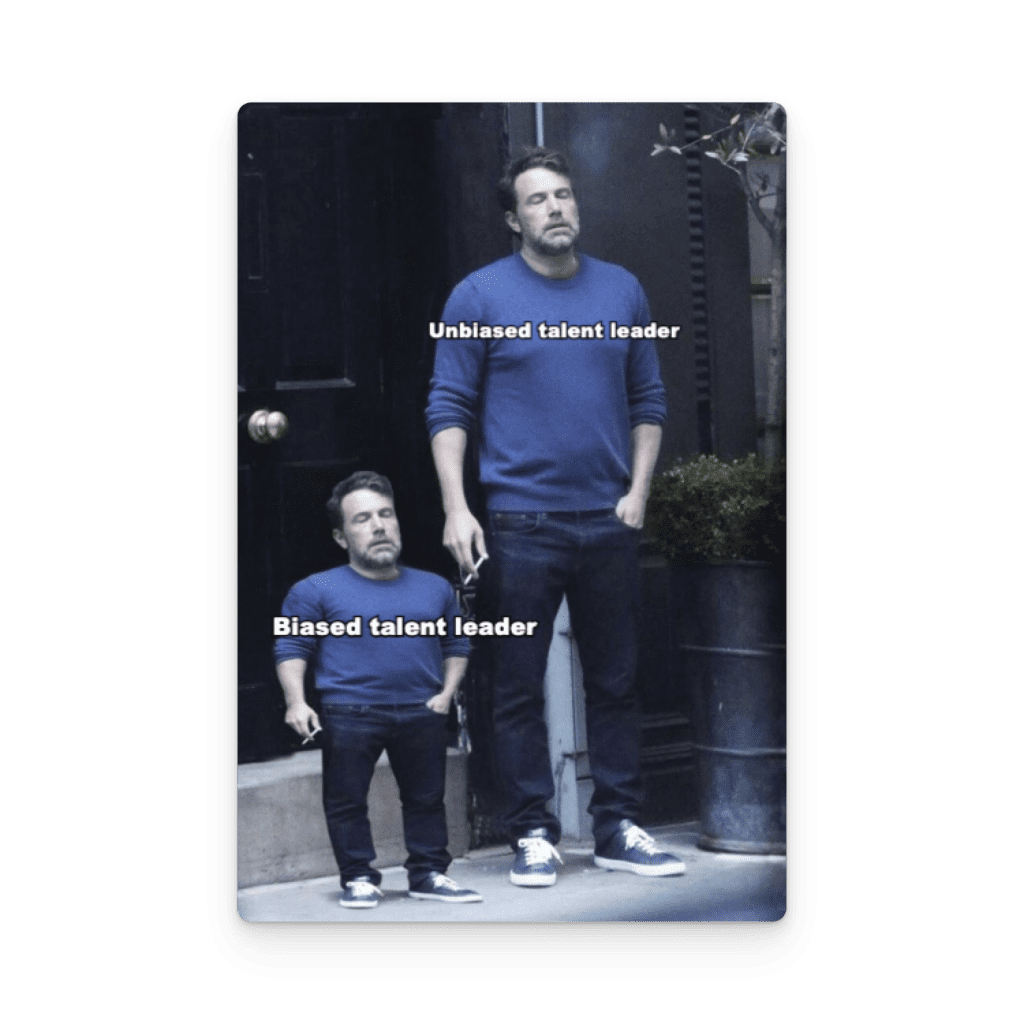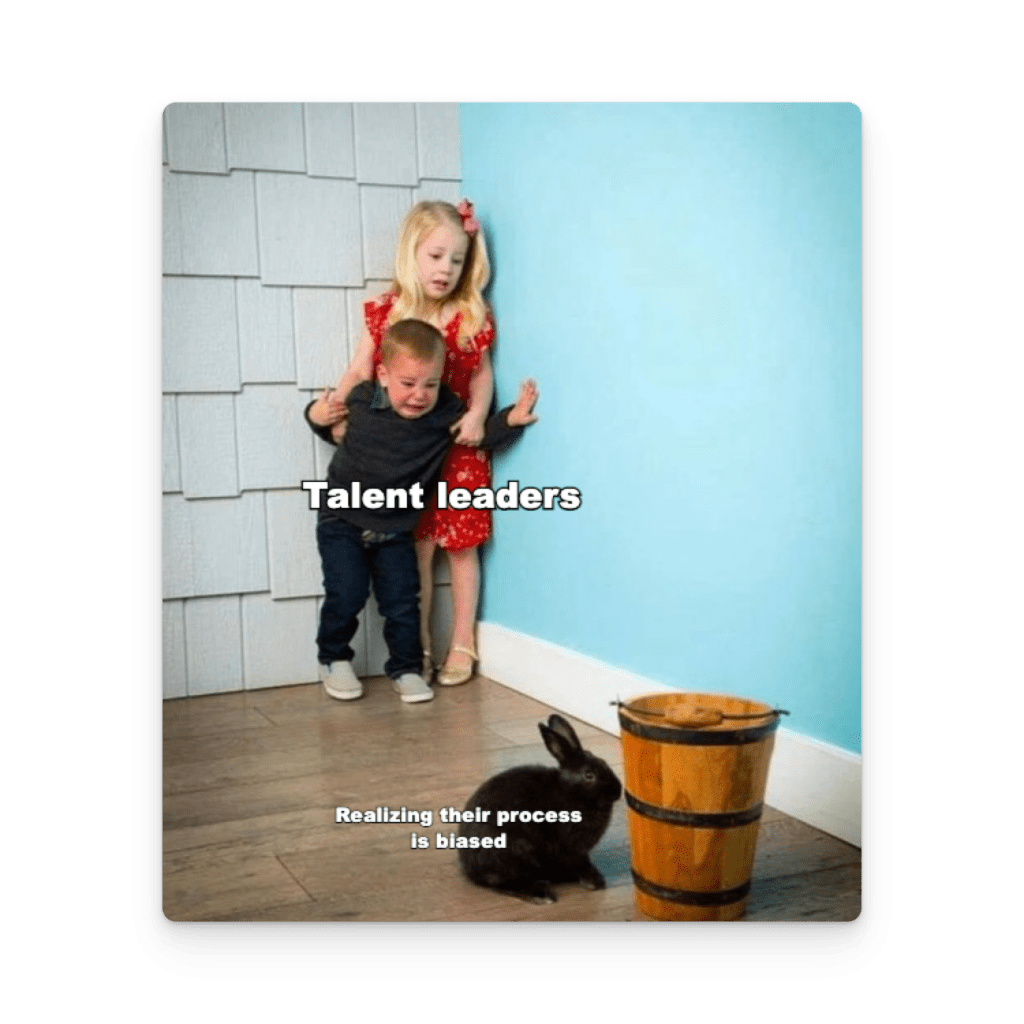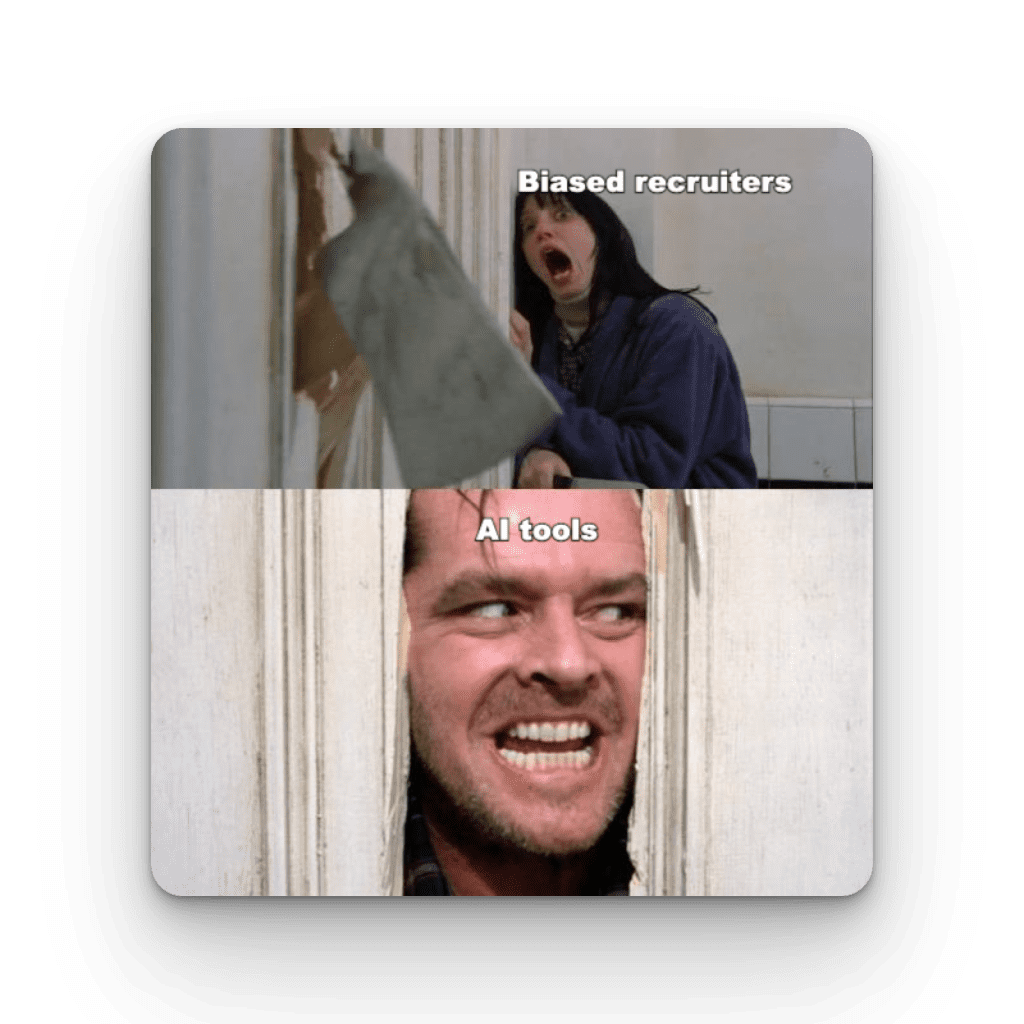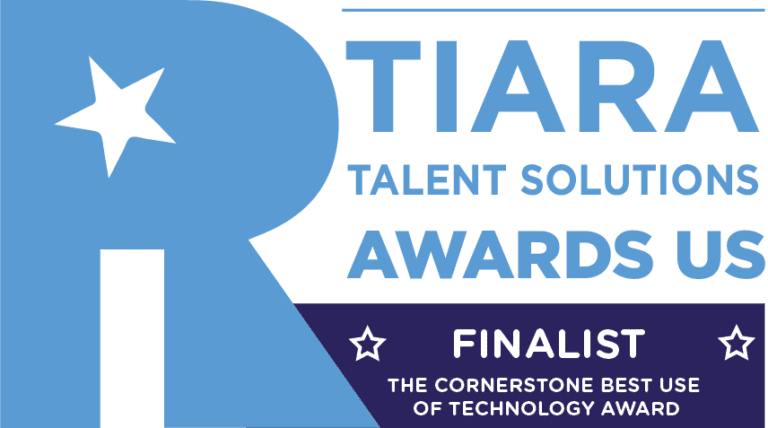It’d be so nice to live in a happy, sunny little world of rainbows and unicorns. But that’s just not the case.
Welcome to Earth. Our hiring processes aren’t just based on a candidate’s qualifications and experience. They’re influenced by a wide range of factors, including their appearance, demeanor and even their name.
It’s nearly impossible to eliminate 100% of bias. But reducing it as much as possible shows we get different results.
Field of Talent’s recruiters have proven it. We hire much better candidates for our clients when we commit to unbiased hiring processes. We even reveal below our strategies to minimize subjectiveness.
Here’s what you need to know about the modern hiring process and what you can do to make it more objective. Steal our tactics!

Why the hiring process is so subjective
In an ideal world, the hiring process would be a meritocracy, where the most qualified candidates get the job.
But that’s not how it works unfortunately.
Here are some roadblocks most recruitment strategies face:
Personal bias
Hiring managers are human. And yes, they have their own beliefs, attitudes and prejudices.
This can lead to discrimination against certain candidates based on their gender, race, ethnicity, experience or other personal characteristics – like their alma mater. Go Hoosiers! 😆
Cultural & social norms
Sure, the culture of an organization can influence hiring decisions too.
For example, a company culture and hiring process that values extroverted employees can overlook the skills of introverted candidates and the value in bringing them aboard.
Also, in a more conservative industry like health insurance or banking, more free-spirited people tend not to succeed in the hiring process as they stand out from the rest of the pool.
Physical appearance
The way a candidate looks can also affect a hiring decision. Apart from more obvious markers like weight, height, race and gender, candidates’ clothing choices and tattoos impact recruiters’ perception.
Another example – Despite only 14.5% of men being over 6 feet tall, 58% of the CEOs of Fortune 500 companies are 6’ or taller.
In virtual interviews without a visual element, candidates’ voices can even sway a decision.
No aspect of a candidate is off limits to biased interviewers and hiring managers sadly.

So how can recruitment leaders reduce bias?
No matter whether it’s gender, education, race, piercings, ethnicity or age, bias can have a significant impact on the job prospects of a candidate.
The first step in overcoming unconscious bias in the hiring process is to recognize that it exists. Then taking active steps to minimize its impact and allow your team to hire the best man or woman for the job.
Blind hiring
Ever heard of blind hiring?
Removing identifying information from resumes and job applications and you’ve got a blind hiring process. Then, recruiters and hiring managers can’t see the candidate’s name, gender, race or other personal information.
Harvard and Princeton experimented with a blind hiring process and the results were stunning.
When men and women submitted anonymous job applications, a woman’s likelihood of getting the job increased by 25-46%.
AI & machine learning
It’s here.

If you purely look at the data, it’s hard to make a biased decision. The numbers speak for themselves!
That’s what AI is doing when you inject it into your hiring process.
By analyzing large data sets of resumes and job applications, AI-powered recruitment platforms can identify the skills and experiences that are most likely to result in a successful hire for your company.
Leverage AI to get rid of gendered language in your job descriptions too, which can deter men or women from applying to your role.
In fact, a ZipRecruiter study shows job listings with gender-neutral language get 42% more applicants.
And remember, more applicants equals more likelihood you find Prince/Princess Charming 🤴
Diverse hiring teams
Want to hire a more diverse team? Start with your hiring team.
Seems like common sense, but sometimes, common sense ain’t so common.
When a diverse group makes hiring decisions, the likelihood of bias decreases. This is because each team member brings a unique perspective and experience to the table. And their choices reflect that diversity.
Like magic!
Training & education
Love your team and don’t think you can hire a whole new crew?
Start with training. Recruitment leaders and coaches create a ton of content on this very topic – reducing bias to hire the best talent possible.
Help your hiring managers recognize their own bias and learn how to minimize it.
The hiring process is far from perfect – you know this.
But we first have to recognize that fact to then reduce the impact of bias.
- Blind hiring
- AI tools
- Diverse hiring teams
- Training and education
These are all effective solutions to reduce your talent acquisition team’s bias and get the talent you need to grow 🌱
Need help refining your recruitment strategy and securing that talent? Maybe your challenge is reducing your time-to-hire, not bias in the hiring process.
We’re your team. Get a free consult here.


